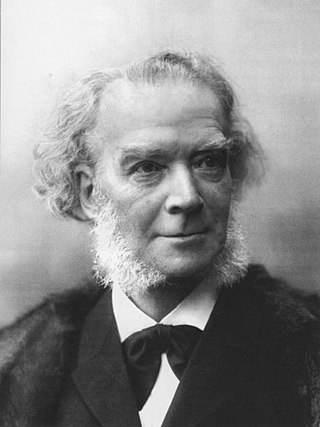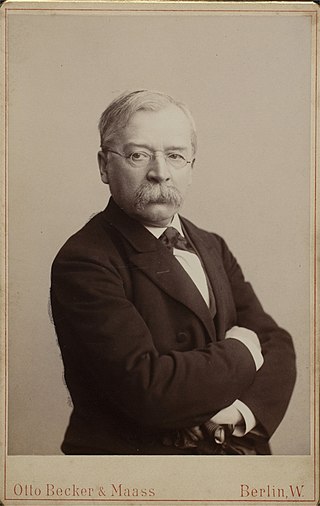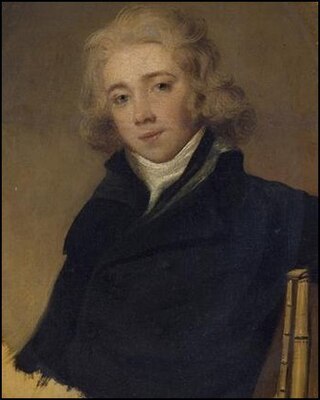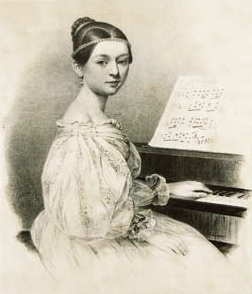The Piano Quintet in F minor, Op. 34, by Johannes Brahms was completed during the summer of 1864 and published in 1865. It was dedicated to Her Royal Highness Princess Anna of Hesse. As with most piano quintets composed after Robert Schumann's Piano Quintet (1842), it is written for piano and string quartet.

Carl Heinrich Carsten Reinecke was a German composer, conductor, and pianist in the mid-Romantic era.

The Octet in F major, D. 803 was composed by Franz Schubert in March 1824. It was commissioned by the renowned clarinetist Ferdinand Troyer and came from the same period as two of Schubert's other major chamber works, the 'Rosamunde' and 'Death and the Maiden' string quartets.
The two Serenades, Op. 11 and 16, represent early efforts by Johannes Brahms to write orchestral music. They both date from after the 1856 death of Robert Schumann when Brahms was residing in Detmold and had access to an orchestra.

Woldemar Bargiel was a German composer and conductor of the Romantic period.
Cello Sonatas No. 1 and No. 2, Op. 5, are two sonatas for cello and piano written by Ludwig van Beethoven in 1796, while he was in Berlin. While there, Beethoven met the King of Prussia Friedrich Wilhelm II, an ardent music-lover and keen cellist. Although the sonatas are dedicated to Friedrich Wilhelm II, Ferdinand Ries tells us that Beethoven "played several times at the court, where he also played the two cello sonatas, opus 5, composed for Duport and himself". Although Jean-Pierre Duport was one of the King's teachers, it is now thought to have been his brother Jean-Louis Duport who had the honor of premiering these sonatas.

Hyacinthe Jadin was a French composer who came from a musical family. His uncle Georges Jadin was a composer in Versailles and Paris, along with his father Jean Jadin, who had played bassoon for the French Royal Orchestra. He was one of five musical brothers, the best known of whom was Louis-Emmanuel Jadin.
Laszlo Varga was a Hungarian-born American cellist who had a worldwide status as a soloist, recording artist, and authoritative cello teacher.
Daniel Levy is an Argentine classical pianist. He is also an author, radio broadcaster and educator.
The Horn Trio in E♭ major, Op. 40, by Johannes Brahms is a chamber piece in four movements written for natural horn, violin, and piano. Composed in 1865, the work commemorates the death of Brahms's mother, Christiane, earlier that year. However, it draws on a theme which Brahms had composed twelve years previously but did not publish at the time.
Felix Mendelssohn's Sextet in D major, Op. 110, MWV Q 16, for piano, violin, two violas, cello, and double bass was composed in April–May 1824, when Mendelssohn was only 15, the same time he was working on a comic opera Die Hochzeit des Camacho. Its composition took place between the Viola Sonata and the Piano Quartet No. 3. It also preceded the famous Octet, Op. 20 by about a year. 1824 is also the probable year of the composition of the Clarinet Sonata. Like the latter, the Sextet was not published during the composer's lifetime. Its first edition was issued in 1868 as a part of a complete collection of Mendelssohn's works, hence the misleadingly high opus number.
Ruralia hungarica is a name given by the Hungarian composer Ernő Dohnányi to four interrelated works.

The Three Romances for Oboe and Piano, Op. 94 is a composition by Robert Schumann, his only composition for oboe. It was composed in December 1849. The work consists of three short pieces in A-B-A form, and it was written during what was speculated to be one of Schumann's manic episodes.
A concert piece is a musical composition, in most cases in one movement, intended for performance in a concert. Usually it is written for one or more virtuoso instrumental soloists and orchestral or piano accompaniment.
The Sonata in B minor, Op. 27 is the only sonata written by Swedish composer Kurt Atterberg. It can be performed by either a string instrument or horn with piano.

The Piano Concerto in A minor, Op. 7, was composed by Clara Wieck, better known as Clara Schumann after her later marriage to Robert Schumann. She completed her only finished piano concerto in 1835, and played it first that year with the Leipzig Gewandhaus Orchestra, conducted by Felix Mendelssohn.

Robert Schumann's Five Pieces in Folk Style, Op. 102 is a set of five short pieces for cello and piano, composed in 1849 and published in 1851 with a dedication to cellist Andreas Grabau. It was Schumann's only published work designed explicitly for performance by cello and piano, though the pieces also appeared in a version prepared by Schumann for violin and piano. The first edition's title page reads "ad libitum violine".






